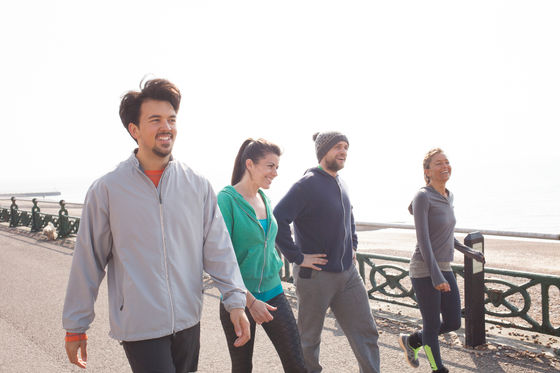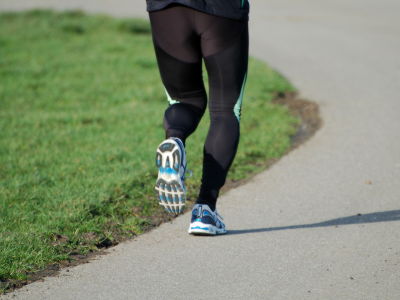Research shows that walking with breaks burns up to 60% more calories than walking continuously

Cars consume a lot of fuel when starting from a stop, so people are
Move less, spend more: the metabolic demands of short walking bouts | Proceedings of the Royal Society B: Biological Sciences
https://royalsocietypublishing.org/doi/10.1098/rspb.2024.1220
Walking in short bursts found to consume 20% to 60% more energy than walking continuously for same distance
https://phys.org/news/2024-10-short-consume-energy-distance.html
This Small Tweak Makes a Huge Difference to Your Daily Walk : ScienceAlert
https://www.sciencealert.com/this-small-tweak-makes-a-huge-difference-to-your-daily-walk
Strolls with stops use more energy than continuous walking, scientists show | Science | The Guardian
https://www.theguardian.com/science/2024/oct/16/strolls-with-stops-use-more-energy-than-continuous-walking-scientists-show
According to the science news site ScienceAlert, the '10,000 steps a day' goal, which originated as a marketing ploy by a Japanese pedometer manufacturer, was not originally based on scientific evidence. However, after being featured in an Australian study , it has since been put into practice around the world and its effectiveness has been verified in other studies.
The results of research on the relationship between number of steps and health vary, ranging from ' 2,000 to 4,000 steps a day is effective ' to '7,000 steps a day is sufficient ' to '10,000 steps a day was definitely effective .'

However, according to a research team led by Francesco Luciano of the University of Milan in Italy, most previous studies on walking and energy expenditure have been limited in that they are based only on data from people who are exercising at a metabolic 'steady state.'
'Steady state is when your heart rate stays constant and your body's energy production and consumption is in balance -- often likened to a car traveling at a cruising speed. But most legged animals, including humans, never reach steady state because they take too few steps,' the team noted.
The research team focused on the difference in metabolism when people repeatedly stop and start exercising compared to when they continue exercising. They recruited 10 volunteers, five men and five women, and had them walk on a treadmill or climb stairs, and analyzed the changes in energy expenditure during these exercises.
The experiment was conducted at three different speeds and for five exercise durations ranging from 10 seconds to 240 seconds, or four minutes. In particular, during the four-minute walk, oxygen intake was measured four times during the walk to evaluate the effects of steady-state walking.
The results showed that short bouts of exercise resulted in greater time-averaged oxygen uptake and metabolic cost than long bouts of exercise, meaning that repeated stops and starts consume more energy than constant, prolonged bouts of exercise to cover the same distance.

Specifically, walking or climbing stairs in a short span of 10 to 30 seconds resulted in 20 to 60% more oxygen intake, an indicator of energy expenditure, than traveling the same distance in one go.
Regarding these results, Luciano said, 'There appears to be a fixed cost from the moment you start walking. Just like when you want to move your car, you need fuel to start the engine and to get it out of the garage, when humans start from a resting state, a significant amount of oxygen is consumed just by starting to walk. This consumption cost occurs regardless of whether you walk for 10 seconds or 30 seconds after starting to walk.'
It is important to note that this study is based on a very small sample size of 10 healthy participants.
On the other hand, the findings may also help improve rehabilitation programs and exercise instruction for people with limited ability to exercise for long periods of time, such as the elderly and people with walking disorders.
The Guardian, an overseas media outlet that covered the study, also pointed out that 'this study may support the effectiveness of 'exercise snacking,' a form of exercise that people who have a sedentary lifestyle or who cannot find time to exercise can do little by little in their daily lives.'
What is 'exercise snacking' that can provide sufficient effects with just a little exercise without going to the gym? - GIGAZINE

◆ Forum is currently open
A forum related to this article has been set up on the official GIGAZINE Discord server . Anyone can post freely, so please feel free to comment! If you do not have a Discord account, please refer to the account creation procedure explanation article to create an account!
• Discord | 'Do you listen to music while walking? What kind of music do you listen to?' | GIGAZINE
https://discord.com/channels/1037961069903216680/1303285288902328360
Related Posts:
in Science, Posted by log1l_ks







